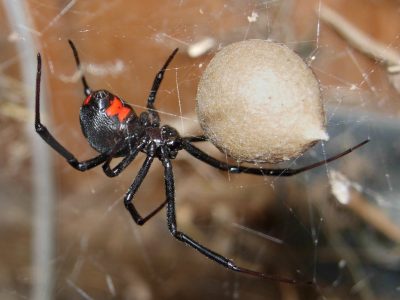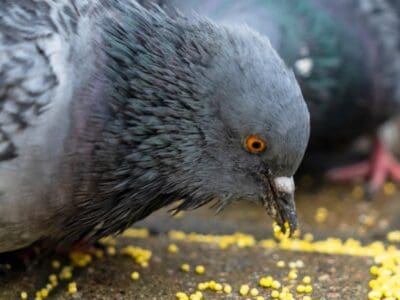Capuchin
Named after Capuchin friars.
Advertisement
Capuchin Scientific Classification
Read our Complete Guide to Classification of Animals.
Capuchin Conservation Status
Capuchin Facts
- Prey
- Insects, mollusks, small vertebrates
- Main Prey
- Insects
- Group Behavior
- Troop
- Fun Fact
- Named after Capuchin friars.
- Estimated Population Size
- Varies by species
- Biggest Threat
- Pet trade and habitat loss
- Most Distinctive Feature
- White or light hair around the face and neck
- Distinctive Feature
- Long tails
- Other Name(s)
- Organ grinder monkey
- Gestation Period
- 160-180 days
- Habitat
- Tropical forest
- Predators
- Jaguar, coyote, jaguarundi, snake, birds of prey
- Diet
- Omnivore
- Lifestyle
- Diurnal
- Favorite Food
- Fruit
- Number Of Species
- -1
- Location
- South America and Central America
Capuchin Physical Characteristics
- Color
- Brown
- Grey
- Red
- Black
- White
- Tan
- Cream
- Chocolate
- Light-Brown
- Skin Type
- Hair
- Lifespan
- Up to 50 years
- Weight
- 3-9 pounds
- Length
- 12-22 inches
- Age of Sexual Maturity
- 4 years (females), 8 years (males)
- Venomous
- No
- Aggression
- Low
View all of the Capuchin images!
Capuchins are small New World monkeys in the subfamily Cepinae. Also known as “organ grinder” monkeys, capuchins are easily recognizable thanks to the tufts of white hair that normally grow around their face and neck. You can find them in tropical forests throughout Central America and South America. Known for their social nature, capuchins live in family groups and display a wide range of complex behaviors.
5 Capuchin Facts
- Capuchins get their name from the Capuchin Order, an order of Franciscan friars.
- In the wild, capuchins can live up to 25 years old, while captive capuchins can live up to 50.
- Capuchins are extremely intelligent; they are easy to train, have a base level of self-awareness, and can use simple tools.
- To maintain bonds and establish social relationships, capuchins engage in various interactions, including acts of friendship, tests against rivals, and intimacy between parents and their offspring.
- You’ll often see capuchins used in movies and television due to their cute features and receptiveness to training.
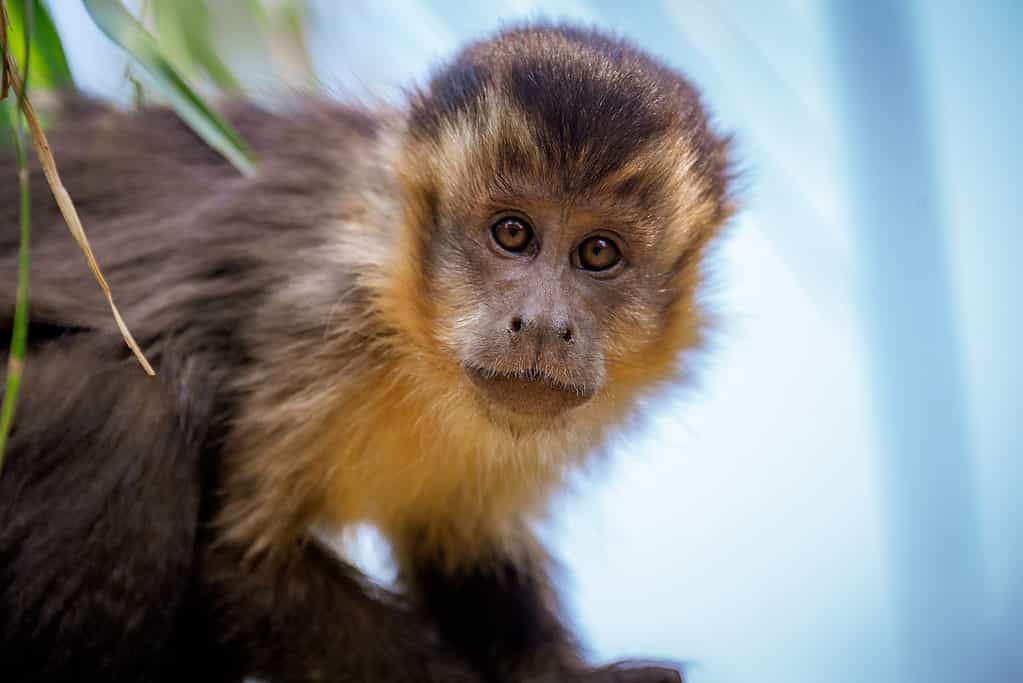
Capuchin monkeys get their name from the Capuchin Order, an order of Franciscan friars.
©Paulo Nabas/Shutterstock.com
Capuchin Scientific name
Capuchin monkeys belong to the subfamily Cebinae in the family Cebidae. Until recently, all capuchins belonged to the genus Cebus. However, starting in 2011, some primatologists began to separate capuchins into two separate genera. Those remaining in the genus Cebus go by the name gracile capuchins, whereas the new genus Sapajus refers to the group known as the robust capuchins. The word Cebus derives from the Ancient Greek word κῆβος (kêbos), meaning “a long-tailed monkey.” Capuchins share their common name with the Capuchin Order, an order of Franciscan friars who wear brown, hooded robes. The Portuguese explorers who came to the Americas in the 15 century named capuchins after the friars due to the monkeys’ dark coats and tufts of light hairs around their necks and faces. Depictions of capuchins in the media also led them to go by the names “organ grinder” or “greyhound jockey” monkeys.
Debate continues to rage as to the number of capuchin species. Presently, primatologists recognize around 15 or 16 species in the genus Cebus and 7 species in the genus Sapajus, and around as many subspecies. The species include:
- Genus Cebus – gracile capuchins
- Colombian white-faced capuchin
- Panamanian white-faced capuchin
- Marañón white-fronted capuchin
- Shock-headed capuchin
- Spix’s white-fronted capuchin
- Humboldt’s white-fronted capuchin
- Guianan weeper capuchin
- Chestnut capuchin
- Ka’apor capuchin
- Trinidad white-fronted capuchin
- Venezuelan brown capuchin
- Sierra de Perijá white-fronted capuchin
- Río Cesar white-fronted capuchin
- Varied white-fronted capuchin
- Santa Marta white-fronted capuchin
- Ecuadorian white-fronted capuchin
- Genus Sapajus – robust capuchins
- Black-capped capuchin
- Blond capuchin
- Black-striped capuchin
- Azara’s capuchin
- Black capuchin
- Crested capuchin
- Golden-bellied capuchin
Capuchin Appearance
Although capuchins vary in appearance depending on the species, they share a number of similarities. They can look predominantly brown, dark black, reddish-brown, gray, or cream. Most feature white or light-colored hairs around the face and on the neck, upper arms, and chest. Capuchins range in size from 12 to 22 inches long and possess a tail as long as their body. On average, they measure around 6 pounds but can range from 6 to 9 pounds.

Most capuchins are brown, dark black, reddish-brown, gray, or cream with light-colored hairs around the face, neck, arms and chest.
©Ondrej Prosicky/Shutterstock.com
Capuchin Evolution and History
The oldest New World monkey fossils date back around 21 million years. According to some researchers, these early ancestors of modern capuchins diverged around 6.2 million years ago. At that time, the Amazon River separated the groups that eventually became the gracile capuchins and the robust capuchins. The gracile capuchins remained north of the river, while the robust capuchins lived south of the river. Over time, gracile capuchins developed longer limbs relative to their body size and rounder jaws than their robust cousins. Meanwhile, robust capuchins evolved strong jaws suitable for cracking nuts.
Capuchin Behavior
Capuchins live in groups or bands that contain anywhere from 6 to 40 members. The band usually has one dominant male but may also have one dominant female. As for the rest of the group, it is composed of subordinate males, females, and their respective children. Capuchins govern large territories, and they mark their borders with urine and feces to ward off competitors. Like other monkeys, capuchins engage in mutual grooming. They use various calls to communicate meaning, including to make contact with one another or warn about a predator. Additionally, they engage in complex social behaviors that include acts to reinforce friendships, intimidate rivals, or bond with a child or romantic partner. Over time, these behaviors can evolve into established rituals such as eye poking to determine if they can trust another member of the group during a confrontation.
Capuchin Habitat
You can find capuchins throughout Central America and South America. Their range extends far north as Honduras and as far south as northern Argentina. They are also found in parts of the Caribbean, including Costa Rica. Capuchins prefer to live in places where they can get both plenty of cover from predators and food to eat. While normally found in tropical rainforests or mountain forests, they also frequent low-lying woodlands and savannas. Capuchins spend most of their lives in trees but often go down to the ground to collect food.
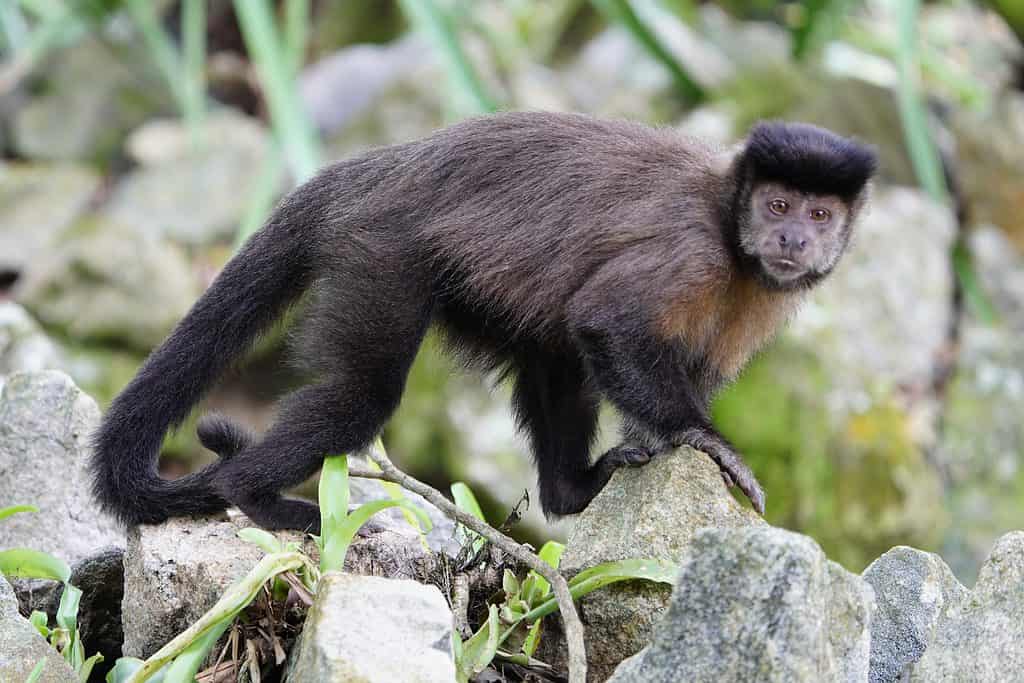
Capuchins can be found throughout Central America and South America.
©guentermanaus/Shutterstock.com
Capuchin Diet
The diet of capuchin monkeys is much more varied when compared to other New World monkeys. Capuchins are opportunistic omnivores that eat a little bit of everything. Their diet includes myriad plant matter, including leaves, fruits, flowers, nuts, seeds, pith, sugarcane, and bulbs. They also readily prey on other animals, such as mollusks, arthropods, insects, and small vertebrates like frogs and lizards. When available, they will even cannibalize other monkeys. Capuchins are diurnal and extremely creative when it comes to acquiring food. They utilize sharp rocks to break open the shells of hard nuts and crustaceans like crabs and shellfish.
Capuchin Predators and threats
Several animals prey on capuchins, including jaguars, jaguarundis, coyotes, snakes, crocodiles, and cougars. They must also watch out for large birds of prey, such as the harpy eagle. While wild capuchins have their fair share of predators, the main threat to capuchins comes from human activities. Capuchins are a favorite target of the pet trade due to their popularity in TV and movies. Some people also hunt capuchins for their meat, although this behavior is rare. While habitat loss does not affect capuchins as much as some other species, they do suffer from habitat fragmentation.
Capuchin Reproduction and Life Cycle
Capuchins mate throughout the year. They are polygamous, although females typically direct most of their sexual advances toward the group’s alpha male. That said, females will readily mate with subordinate males and may engage in intercourse several times in one day. While capuchins mate year-round, they only enter a gestation period once every two years. The gestation period typically runs from December to April, and gestation lasts 160 to 180 days. At birth, young capuchins cling to their mothers’ chests until they grow too large and shift onto their mothers’ backs. Females raise their offspring alone, as males rarely help care for the young. Males typically reach sexual maturity around 8 years old, while females mature around 4 years old. Wild capuchins usually live around 25 years, while captive capuchins often live up to 50.
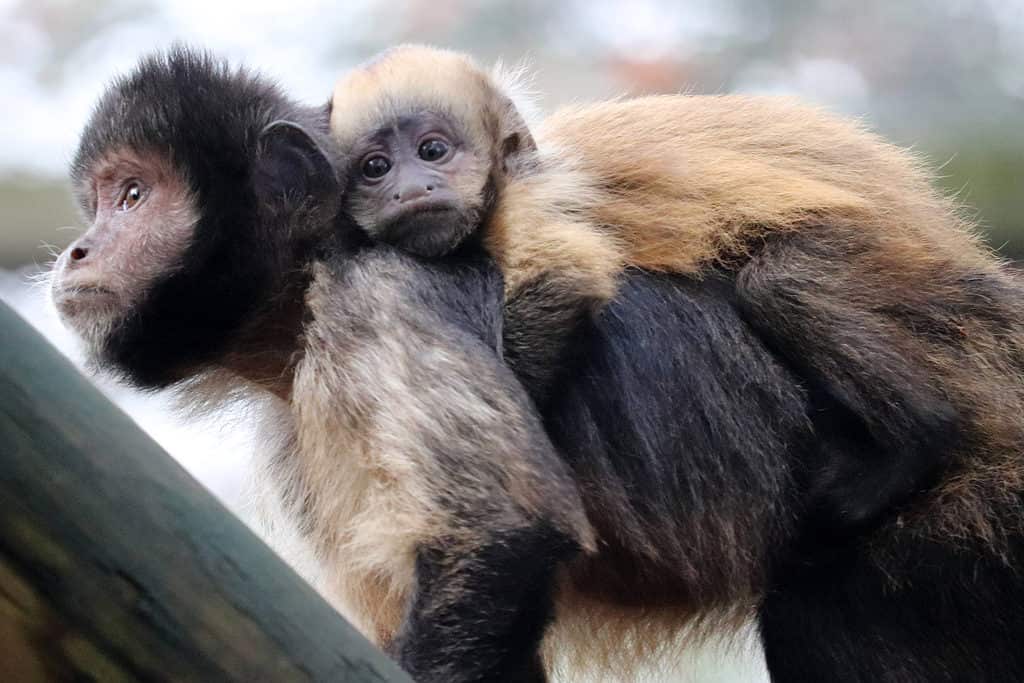
At birth, young capuchins cling to their mothers’ chests until they grow too large and shift onto their mothers’ backs.
©Lauren Bilboe/Shutterstock.com
Capuchin Population
The number of capuchins varies depending on the species. While some species appear to be doing rather well, others are on the decline. For example, Humboldt’s white-fronted capuchin is least as a species of Least Concern, and Marañón white-fronted capuchin is Near Threatened. On the other hand, Colombian white-faced capuchins are Vulnerable, while Ka’apor capuchins are Critically Endangered.
Related Animals
View all 235 animals that start with CCapuchin FAQs (Frequently Asked Questions)
Are capuchins carnivores, herbivores, or omnivores?
Capuchins are omnivores that eat a variety of foods including fruits, insects, leaves, flowers, seeds, nuts, pith, crustaceans, and small vertebrates. They may even engage in cannibalism from time-to-time.
Where are capuchins found?
Capuchins live in a range of habitats including rainforests and mountain forests. You can find them in Central America and South America as well as parts of the Caribbean.
Are capuchins good pets?
Capuchins require a lot of specialized care and can live for decades. While they can bond with their owners, they can be difficult to rehome if they have more than one owner, and as such don’t make great pets.
How much do capuchin monkeys cost?
The price of a capuchin varies depending on its age and whether you buy one from a reputable breeder. They can cost as low as $3,000, but typically cost between $5,000 and $7,000.
Thank you for reading! Have some feedback for us? Contact the AZ Animals editorial team.
Sources
- Rainforest Alliance, Available here: https://www.rainforest-alliance.org/species/capuchin-monkey/
- Los Angeles Zoo, Available here: https://www.lazoo.org/explore-your-zoo/our-animals/mammals/monkey-crested-capuchin/
- National Geographic, Available here: https://www.nationalgeographic.com/science/article/capuchin-monkeys-are-choosy-about-the-best-nutcrackers
- UGA Today, Available here: https://news.uga.edu/capuchin-monkeys-show-tools-widespread-among-animals-022813/
- Science Daily, Available here: https://www.sciencedaily.com/terms/capuchin_monkey.htm









